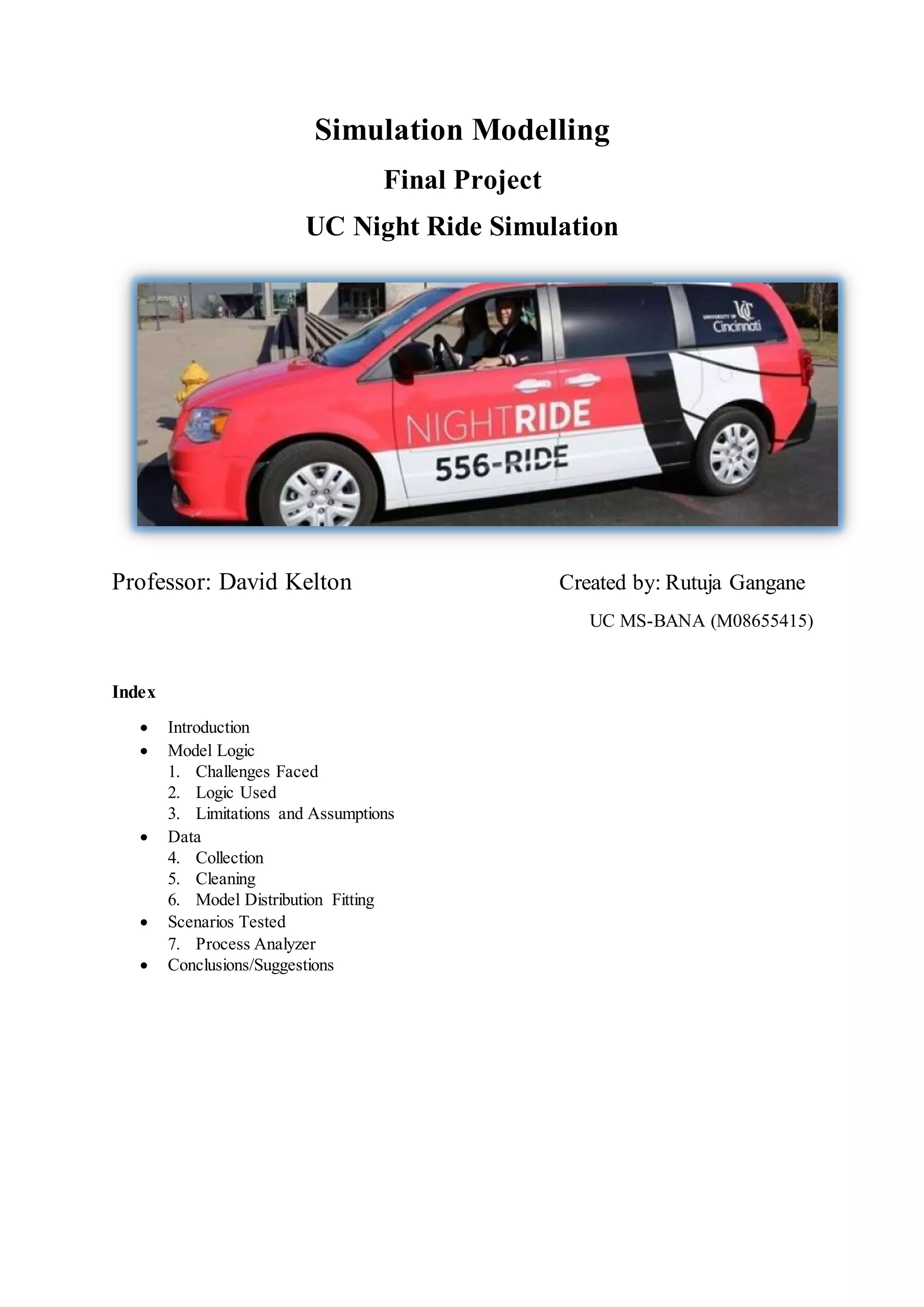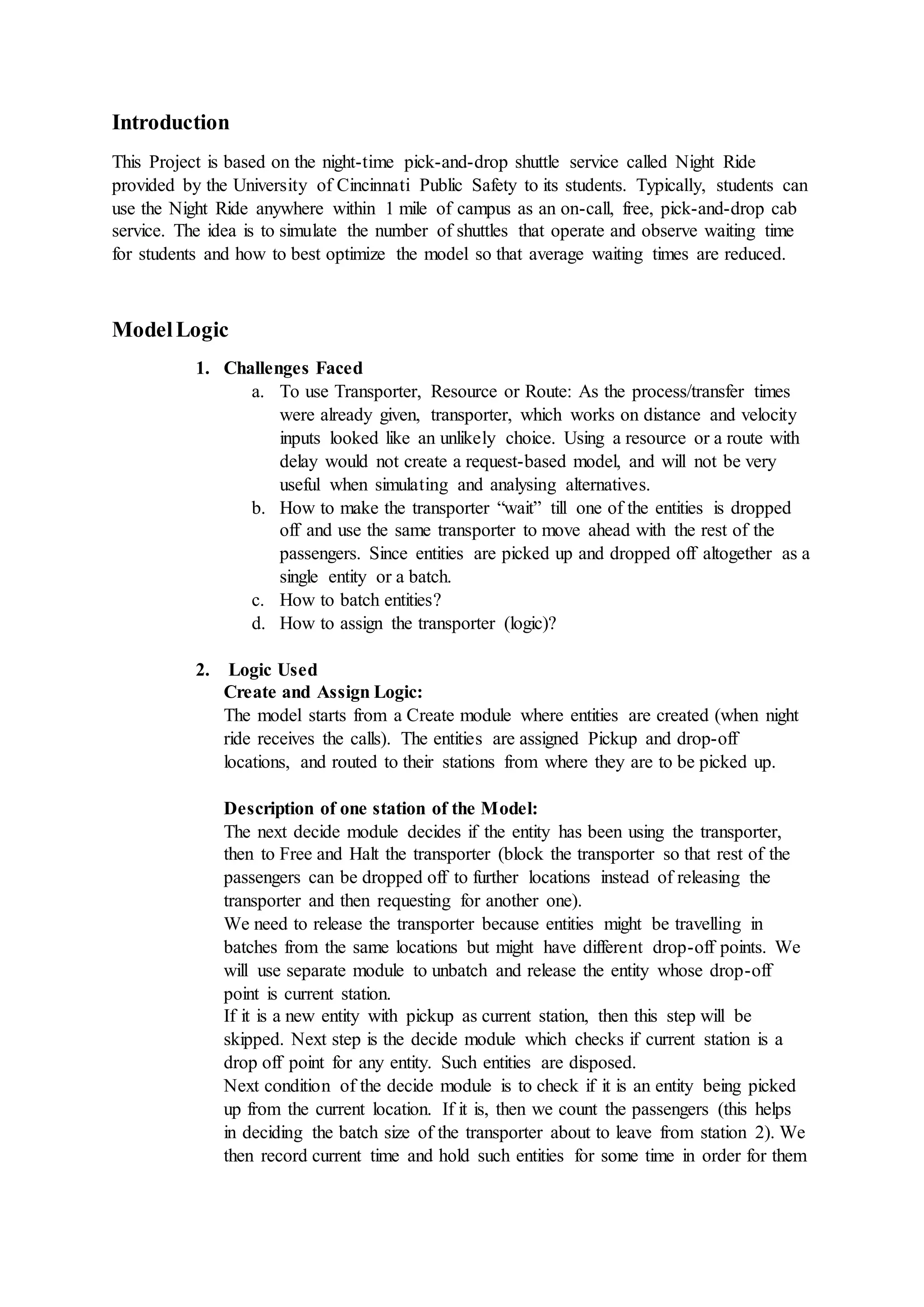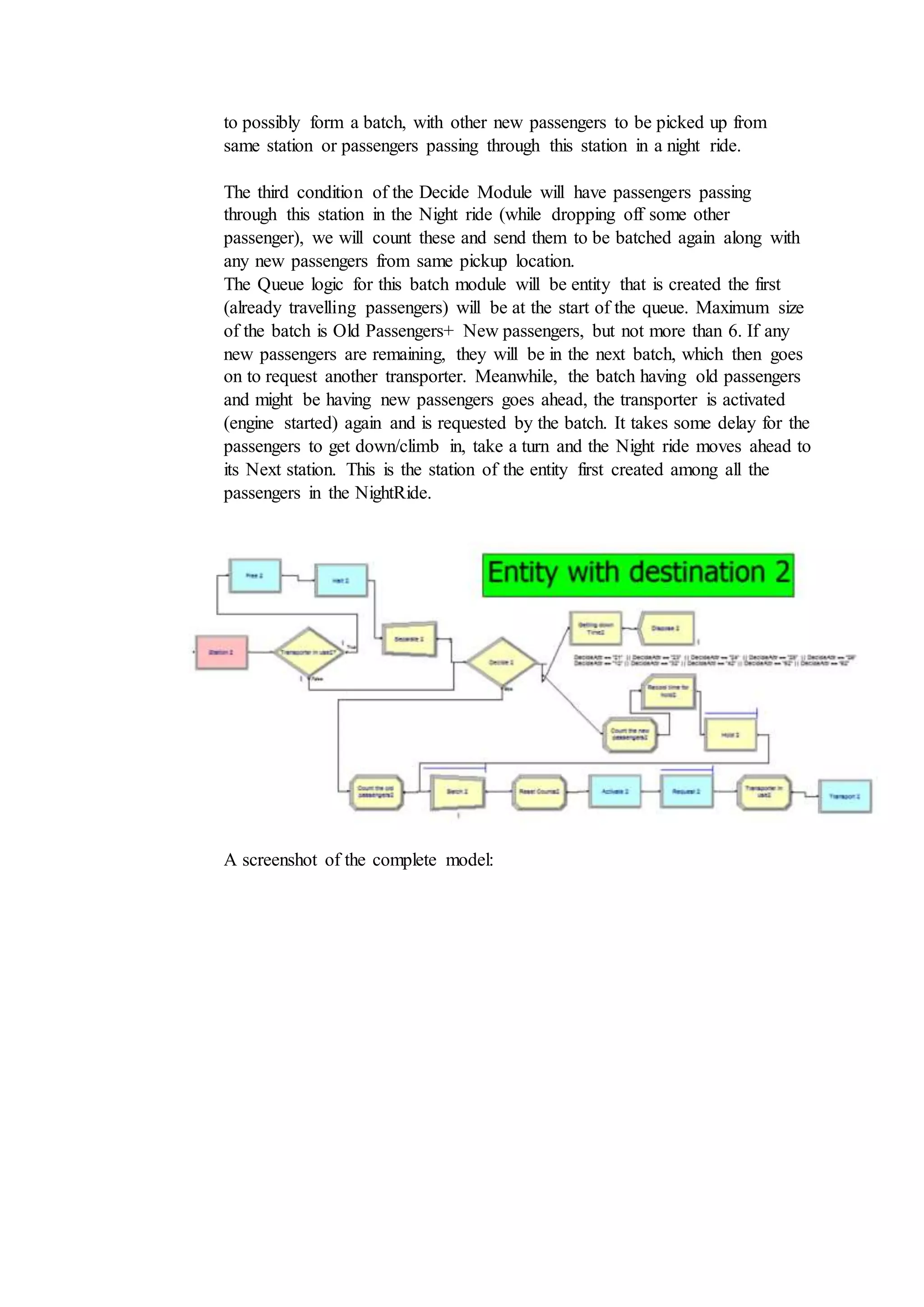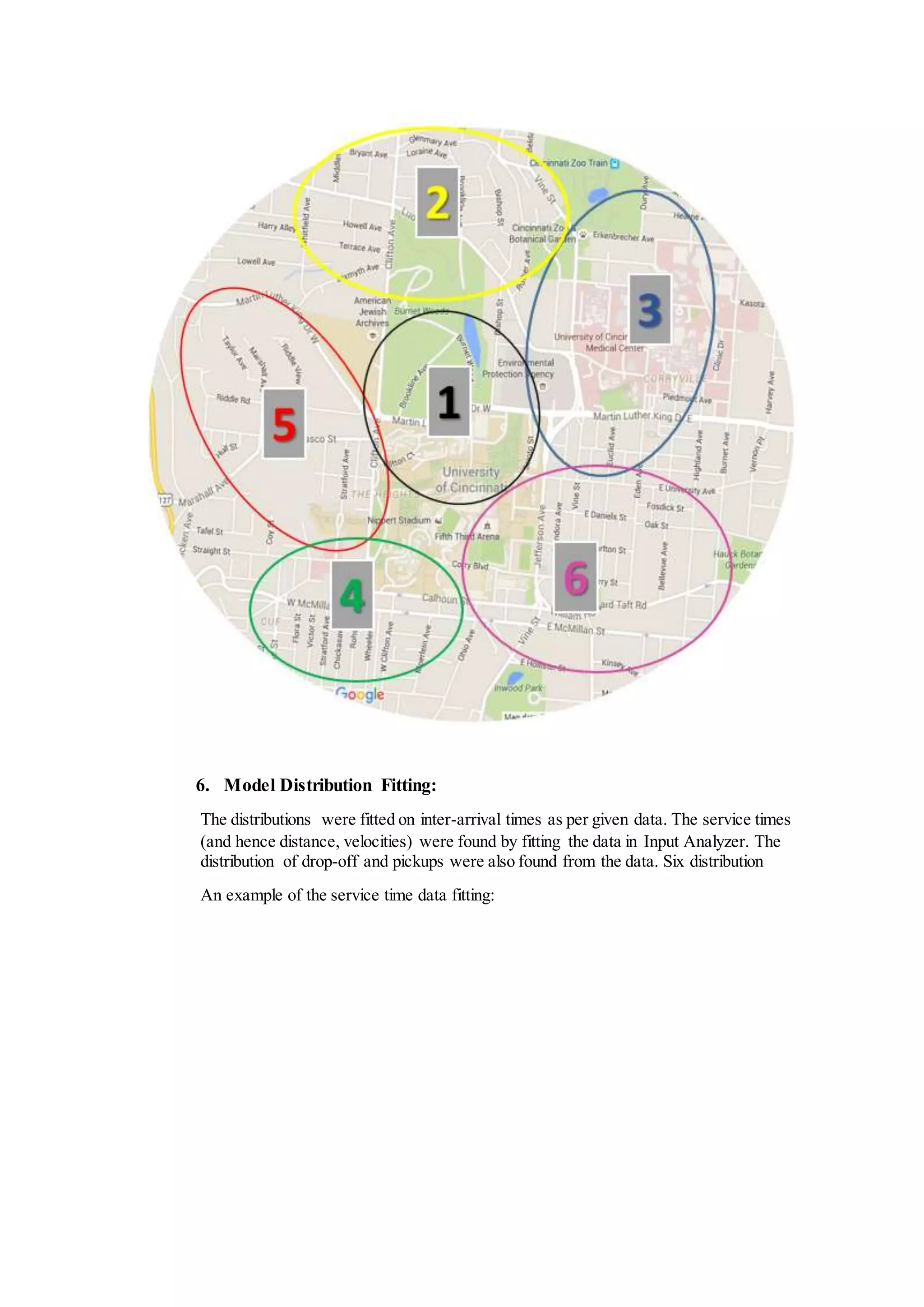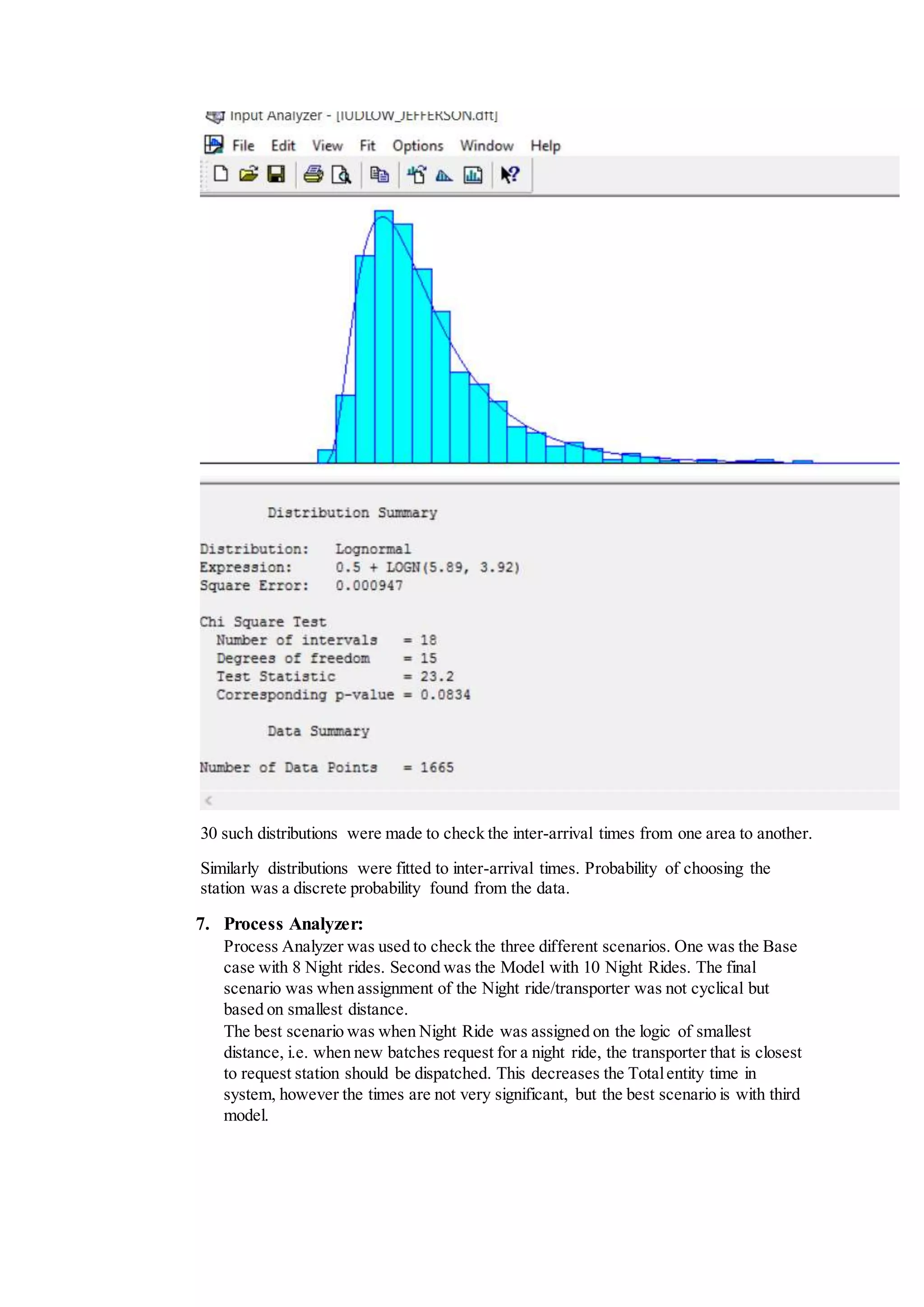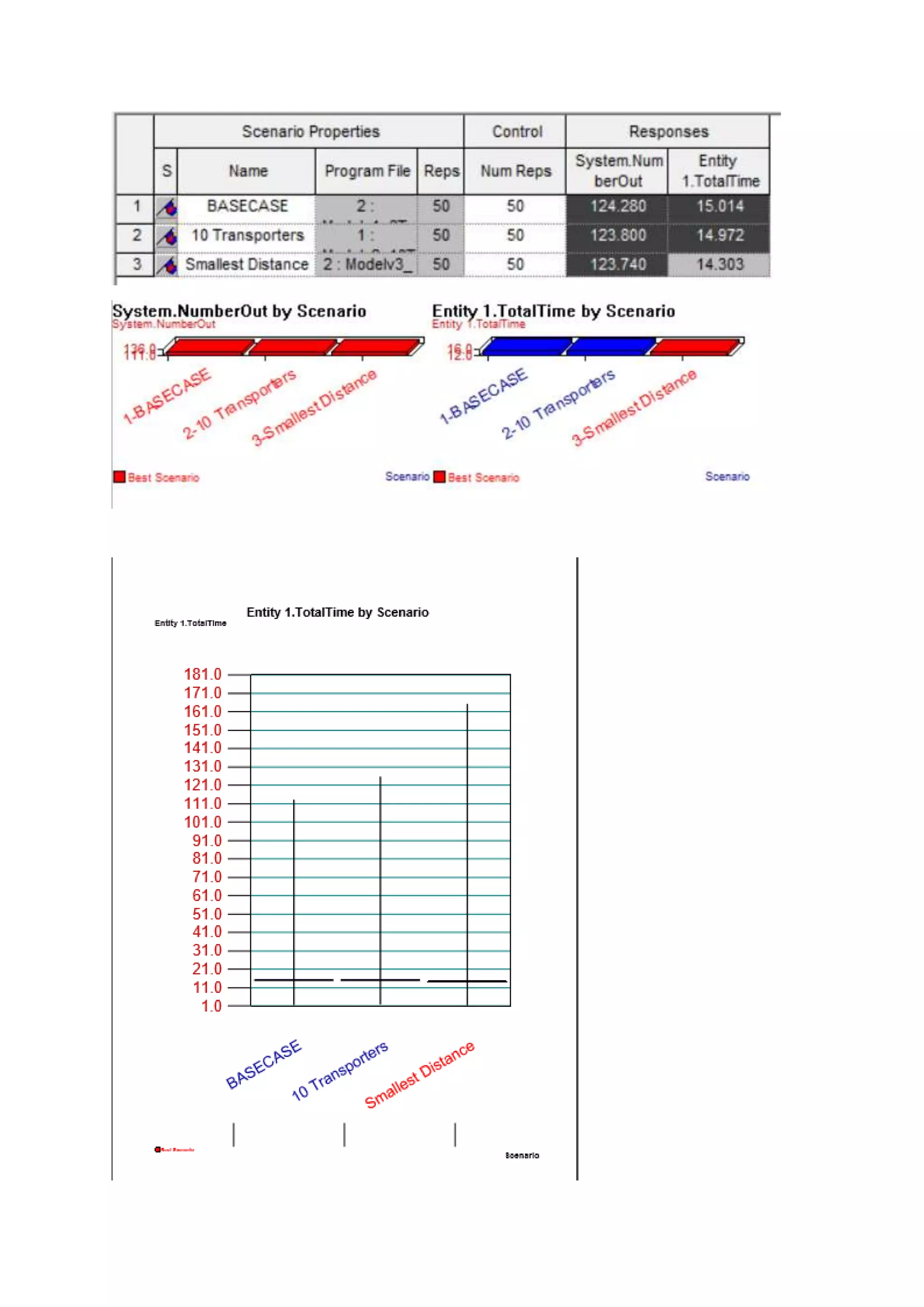This document presents a simulation modeling project for the University of Cincinnati's night ride shuttle service, focusing on optimizing shuttle assignment to reduce wait times for students. Key elements include the model's logic, challenges faced, data collection, and distribution fitting, leading to a conclusion that assigning shuttles based on proximity rather than a cyclical system is the most effective strategy. The simulation evidences that this approach significantly improves average times in the system, despite slightly increasing maximum waiting times.
